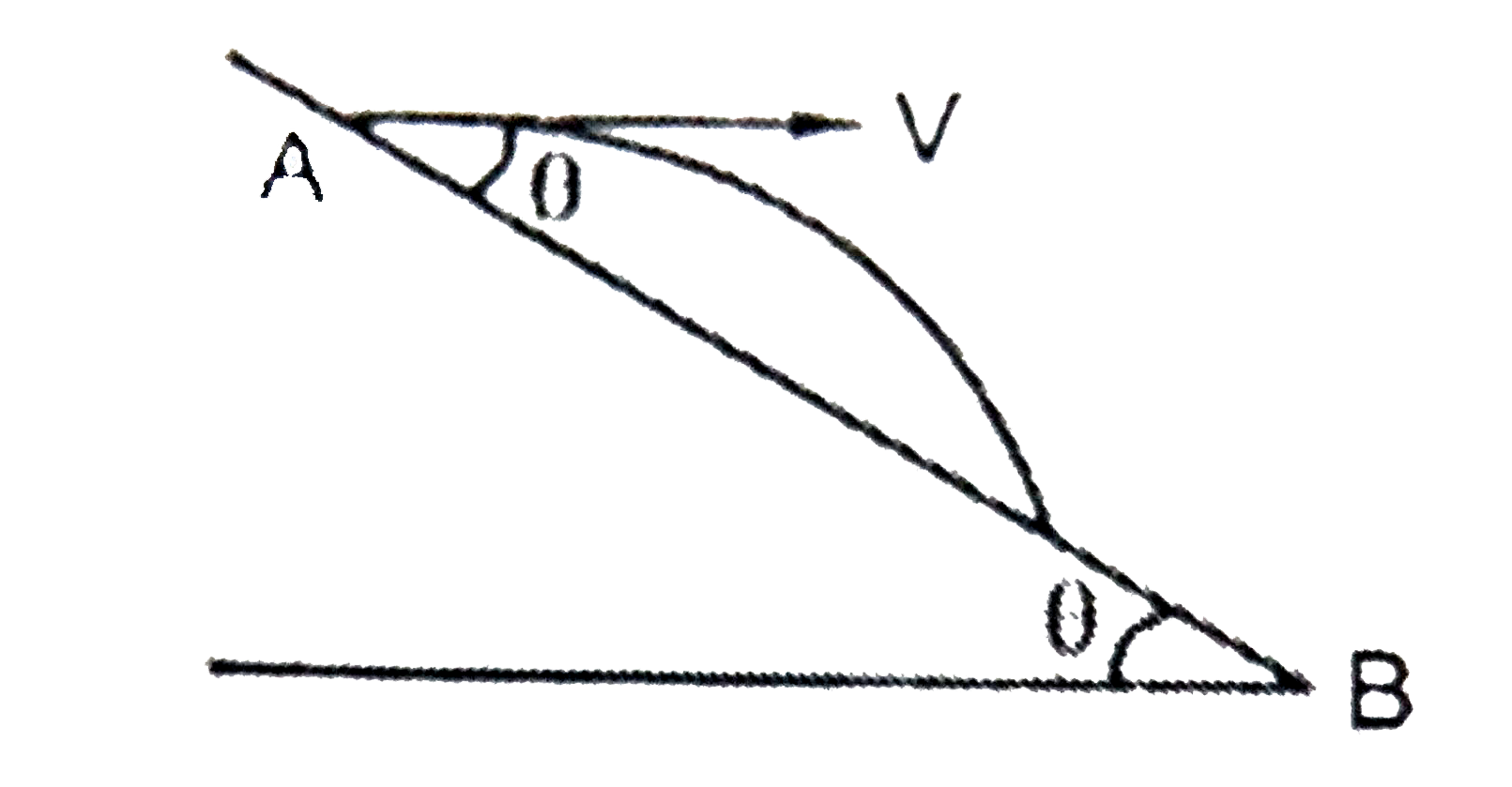Two bodies are projected from ground with equal speeds 20 m/sec from the same position in same vertical plane to have equal range but at different angle above the horizontal. If one of the angle is 30° the sum of their maximum heights is (assume g=10m/s2)
400 m
20 m
30 m
40 m
The correct Answer is:B
To solve the problem, we need to find the sum of the maximum heights of two bodies projected at different angles but with the same initial speed and equal range. One of the angles is given as 30°. We will also use the fact that the angles that give the same range are complementary angles.
1. Identify the Given Data:
- Initial speed (u) = 20 m/s
- Angle 1 (θ₁) = 30°
- Angle 2 (θ₂) = 90° - θ₁ = 90° - 30° = 60°
- Acceleration due to gravity (g) = 10 m/s²
2. Formula for Maximum Height:
The maximum height (H) reached by a projectile is given by the formula:
H=u2sin2θ2g
3. Calculate Maximum Height for θ₁ (30°):
- Substitute θ₁ into the formula:
H₁=(20)2sin2(30°)2⋅10
- We know that sin(30°)=12, so:
H₁=400⋅(12)220=400⋅1420=10020=5 m
4. Calculate Maximum Height for θ₂ (60°):
- Substitute θ₂ into the formula:
H₂=(20)2sin2(60°)2⋅10
- We know that sin(60°)=√32, so:
H₂=400⋅(√32)220=400⋅3420=30020=15 m
5. Sum of Maximum Heights:
- Now, we add the two maximum heights:
Htotal=H₁+H₂=5 m+15 m=20 m
Final Answer:
The sum of their maximum heights is 20 meters.
- Initial speed (u) = 20 m/s
- Angle 1 (θ₁) = 30°
- Angle 2 (θ₂) = 90° - θ₁ = 90° - 30° = 60°
- Acceleration due to gravity (g) = 10 m/s²
The maximum height (H) reached by a projectile is given by the formula:
H=u2sin2θ2g
- Substitute θ₁ into the formula:
H₁=(20)2sin2(30°)2⋅10
- We know that sin(30°)=12, so:
H₁=400⋅(12)220=400⋅1420=10020=5 m
- Substitute θ₂ into the formula:
H₂=(20)2sin2(60°)2⋅10
- We know that sin(60°)=√32, so:
H₂=400⋅(√32)220=400⋅3420=30020=15 m
- Now, we add the two maximum heights:
Htotal=H₁+H₂=5 m+15 m=20 m
The sum of their maximum heights is 20 meters.
Topper's Solved these Questions
- MOTION IN TWO DIMENSIONBOOK - ERRORLESSCHAPTER - MOTION IN TWO DIMENSIONEXERCISE - PAST YEARS QUESTIONS
22 Videos
- MOTION IN TWO DIMENSIONBOOK - ERRORLESSCHAPTER - MOTION IN TWO DIMENSIONEXERCISE - ASSERTION & REASON
19 Videos
- MOTION IN TWO DIMENSIONBOOK - ERRORLESSCHAPTER - MOTION IN TWO DIMENSIONEXERCISE - NCERT BASED QUESTIONS (HORIZONTAL PROJECTILE MOTION)
11 Videos
- MOTION IN ONE DIMENSIONBOOK - ERRORLESSCHAPTER - MOTION IN ONE DIMENSIONEXERCISE - ASSERTION AND REASON
24 Videos
- NEWTON'S LAWS OF MOTIONBOOK - ERRORLESSCHAPTER - NEWTON'S LAWS OF MOTIONEXERCISE - ASSERTION & REASON
18 Videos
Similar Questions
A particle is projected horizontally with a speed V=5m/s from the top of a plane inclined at an angle θ=37∘ to the horizontal (g=10m/s2)

Find the time taken by the particle to hit the plane.
View SolutionFor an object projected from ground with speed u horizontal range is two times the maximum height attained by it. The horizontal range of object is
View Solution
Knowledge Check
For given value of u, there are two angles of projection for which the horizontal range is the same. the sum of the maximum heights for these two angles is
Aindependent of the angle of projectionBdependent of the angle of projection.CMay depend on angle of projectionDNone of the aboveTwo balls of equal mass are projected from a tower simultaneously with equal speeds. One at angle θ above the horizontal and the other at the same angle θ below the horizontal. The path of the center of mass of the two balls is
Aa vertical straight lineBa horizontal straight lineCa straight line at an angle α(<0) with horizontalDa parabolaTwo balls are projected at an angle θ and (90∘−θ) to the horizontal with the same speed. The ratio of their maximum vertical heights is
A1:1Btanθ:1C1:tanθDtan2θ:1
A particle is projected at an angle θ from ground with speed u (g = 10 m/s2 )
View SolutionTwo balls are thrown with the same speed from a point O at the same time so that their horizontal ranges are same. If the difference of the maximum height attained by them is equal to half of the sum of the maximum heights, then the angles of projection for the balls are
View SolutionTwo balls are projected with the same velocity but with different angles with the horizontal. Their ranges are equal. If the angle of projection of one is 30° and its maximum height is h, then the maximum height of other will be
View SolutionA projectile is projected from ground such that the maximum height attained by, it is equal to half the horizontal range.The angle of projection with horizontal would be
View SolutionTwo stones are projected with the same speed but making different angles with the horizontal. Their ranges are equal. If the angles of projection of one is π/3 and its maximum height is h1 then the maximum height of the other will be:
View Solution
